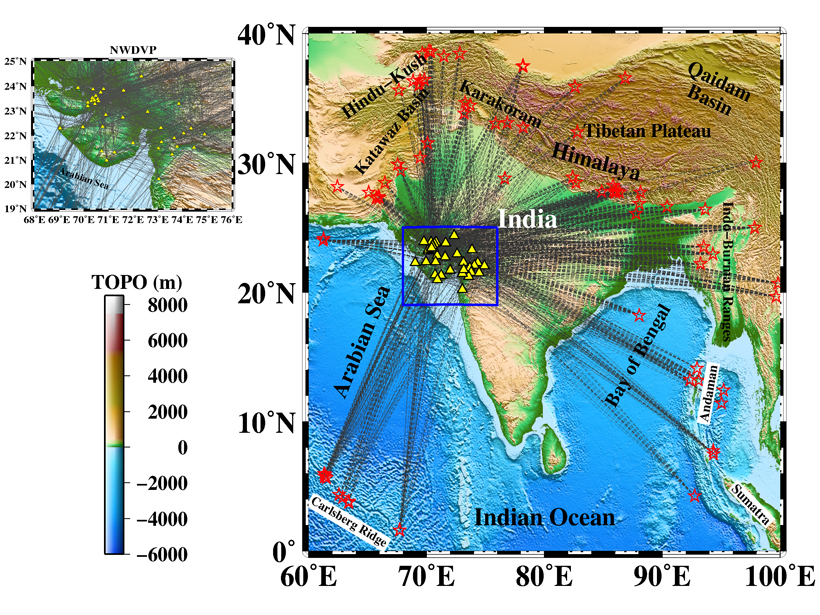Source: Journal of Geophysical Research: Solid Earth
The Deccan Traps region in northwest India was the site of massive volcanism at the end of the Cretaceous period, thought to be linked to a deep thermal anomaly in the mantle. The presence of abnormally hot material thins and rifts the lithosphere (the rigid ‘plate’, comprising the crust and uppermost mantle) and, in this case, led to the eruption of an enormous volume of flood basalts. These processes can alter the seismic properties of the crust and upper mantle, preserving structures related to the Deccan magmatism.
Sharma et al. [2021] use seismic tomography to investigate the present-day structure beneath the region. By using two different types of seismic surface wave – Rayleigh and Love – they imaged both the overall seismic structure of the crust and upper mantle, and the distribution of radial anisotropy. Anisotropy is the dependence of seismic wave speed on direction as the wave passes through the medium, and generally arises from structural or mineralogical alignments.
The authors noted a thinned lithosphere and low seismic wave speed anomaly suggesting the presence of a plume head beneath part of the study region. In addition, the radial anisotropy newly found in this study is consistent with vertically oriented structural alignments in the upper mantle, likely preserving a record of the upwelling of the magma that produced the Deccan Traps volcanism.
Citation: Sharma, J., Kumar, M. R., Roy, K. S., Pal, S. K., & Roy, P. N. S. [2021]. Low‐velocity zones and negative radial anisotropy beneath the plume perturbed northwestern Deccan volcanic province. Journal of Geophysical Research: Solid Earth, 126, e2020JB020295. https://doi.org/10.1029/2020JB020295
―Fiona Darbyshire, Associate Editor, JGR: Solid Earth
Text © 2021. The authors. CC BY-NC-ND 3.0
Except where otherwise noted, images are subject to copyright. Any reuse without express permission from the copyright owner is prohibited.

